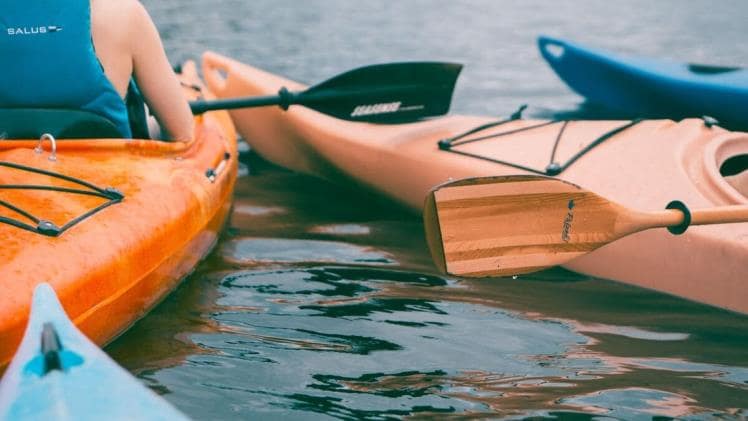Introduction
You’re interested in buying a kayak. Great! But now what? With all the different types, brands and models available, it can be tough to figure out which one is right for you.
In this article, we’ll walk you through the process of choosing the perfect kayak for your needs. We’ll start by explaining the different types of kayaks and their uses, then help you figure out which features are important to you. We’ll also give you some tips on how to test drive a kayak and what to look for when comparing models.
Finally, we’ll recommend a few of our favorite kayaks for beginners and provide a few resources for further reading. So, whether you’re a first-time buyer or just looking to upgrade your current kayak, read on for everything you need to know about choosing the right one for you.
What Are the Different Types of Kayaks?
There are a few different types of kayaks that you’ll want to be aware of before making a purchase. Here are the most common types: You can also learn more about different types of kayak at Guide For Kayaking, a blog that covers each topic on kayak, paddle boarding and boats in depth.
– Sit-on-top: These are the most popular type of kayak and are great for beginners. They’re stable and easy to get in and out of, but don’t offer as much storage as other types.
– Sit-inside: Sit-inside kayaks are great for longer trips as they offer more storage, but can be harder to get in and out of. They’re also not as stable as sit-on-tops.
– Inflatable: Inflatable kayaks are a good option if you don’t have a lot of storage space, as they can be deflated and stored away when not in use.
Now that you know the different types of kayaks, you can start to narrow down your options based on what you’ll be using it for.
What Are the Different Features of Kayaks?
Now that you know the different types of kayaks, let’s talk about the different features that kayaks have. This way, you can decide which features are important to you and narrow down your choices even further.
Some common features include:
– The type of hull: Kayaks can have either a flat bottom or a rounded hull. Flat bottom kayaks are more stable and easier to paddle, while rounded hull kayaks are faster and more maneuverable.
– The length: Kayaks can range from 10 feet to 18 feet long.
– The width: The wider the kayak, the more stable it will be.
– The weight capacity: This is how much weight the kayak can hold, including you, your gear, and any supplies.
– The material: Kayaks can be made from fiberglass, plastic, or composite materials. Fiberglass is the lightest option but also the most expensive. Plastic is the heaviest but also the most durable. Composite materials are a mix of fiberglass and plastic and offer a happy medium in terms of weight and price.
How to Choose the Right Size Kayak?
Choosing the right size kayak is important for a number of reasons. First and foremost, you want to make sure you’re comfortable while paddling. If you’re too small for your kayak, you might find yourself feeling cramped and uncomfortable. On the other hand, if you’re too big for your kayak, you might have a hard time maneuvering.
The other thing to keep in mind is that the size of your kayak will affect how much gear you can bring with you. If you’re planning on going on long camping trips, you’ll need a kayak that’s large enough to accommodate all of your gear.
Generally speaking, there are three different size categories for kayaks:
– Small: up to 10 feet long
– Medium: 10-12 feet long
– Large: 12+ feet long
If you’re not sure which size is right for you, it’s always a good idea to err on the side of caution and go with a larger kayak. You can always downsize later if you find that you don’t need all that extra space.
How to Choose the Right Type of Kayak for You?
Now that you know the different types of kayaks, it’s time to choose the right one for you.
– Where will you be kayaking? If you’re planning on kayaking in whitewater, you’ll need a different type of kayak than if you’re planning on kayaking in calm waters.
– What is your budget?
– What is your level of experience? If you’re a beginner, you might want to start with a lower-priced kayak. If you’re more experienced, you might want to invest in a higher-priced kayak.
– What are your storage and transportation needs? If you have a lot of gear or plan on kayaking in remote areas, you’ll need a kayak with more storage than if you’re just planning on kayaking for an hour or two close to home.
Conclusion
Now that you know how to choose a kayak, it’s time to get out there and start paddling! There are so many different kayaks on the market, and it can be tough to decide which one is right for you. Use this buyer’s guide to help you narrow down your choices and find the perfect kayak for your needs.
Don’t forget to consider your budget, skill level, and intended use when you’re kayak shopping. And once you’ve found the perfect kayak, be sure to take good care of it so you can enjoy many years of paddling fun.

